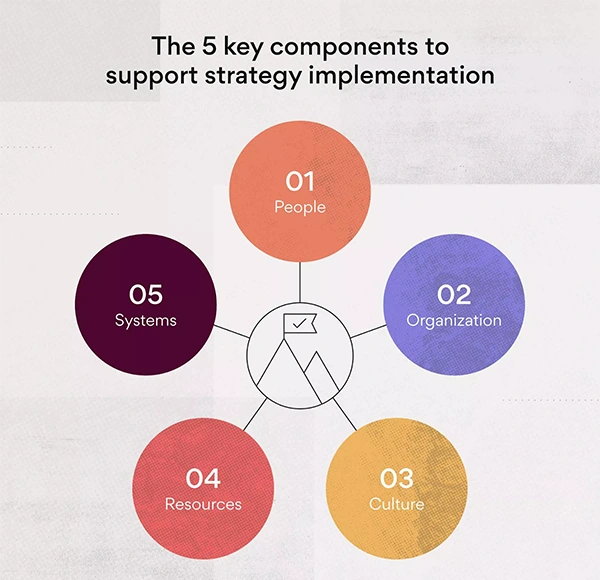The Future of IT Services: Embracing Digital Transformation
The only constant in the technology industry is change
– Marc Benioff
Are you an IT service provider? IT services are quite crucial as without them most of the organization won’t be able to function. A lot of changes have been made here to make it more efficient, but what are IT services?
According to Gartner, “IT services refers to the application of business and technical expertise to enable organizations in the creation, management, and optimization of or access to information and business processes.”
Since this is a digitalized era, IT services are also embracing it, and I’ll give you an in-depth view of what new changes are coming with this transformation.
The Digital Revolution is Here
The business world currently faces an exceptional technological transformation. It has been revealed by market analysis that the Global Digital Transformation of the market is going to expand from $829.5 billion in 2023 to $8,567.5 billion by 2033. It will maintain a compound annual growth rate (CAGR) OF 26.3%.
This rapid growth is possible because modern business operations have integrated technology in every aspect. The numbers tell a compelling story: More than nine out of ten businesses have started participating in digital activities. Digitalization remains the foremost strategic focus revealed by 87% of senior executives.
Around the world, 92% of leadership teams have implemented cloud technology to varying extents, and AI integration or exploration is occurring within 77% of corporate operations.
Key Components of Modern IT Services
Digital transformation demands proficiency in multiple essential components to maintain competitiveness. Here’s what successful organizations need to focus on:
1. Cloud Infrastructure
- Reliable computing resources
- Innovative storage systems
- Enhanced security features
- Budget-friendly operations
2. Data Analytics

- Real-time organizational evaluations
- Preordained analytics
- User behavior monitoring
- Statistical decision-making
3. Cybersecurity
- Threat surveillance and avoidance
- Data protection
- Conformity management
- Security comprehension training
4. Digital Workplace Solutions
- Remote work permits
- Team-building tools
- Mobile device management
- Innovative employee engagement
Beyond technical support, the value of IT service providers lies in their ability to align technology with business outcomes. Many organizations are now leveraging specialized Salesforce Data Cloud Consulting services to integrate customer data more effectively into their digital transformation strategies. This type of guidance ensures that data-driven insights directly support improved decision-making, customer engagement, and long-term competitiveness.
Implementation Strategies for Success
Organizations need to adhere to proven implementation strategies because 63% of them have experienced enhanced performance from digital transformation initiatives. A successful implementation depends majorly on structured methods that address short-term requirements along with future goals and precise planning.
Understanding Your Starting Point
Before diving into implementation, organizations must conduct technology audits and evaluate their digital capabilities. They have to identify skill gaps within their workforce and document existing processes and workflows.
The foundational assessment process enables organizations to build an effective transformation strategy. It has been noted that organizations that have performed complete assessments before starting digital transformation have success 2.5 times more often.
In the infographic below, you can see the crucial components that support strategy implementation.

1. Assessment and Strategy
Evaluate your existing technology capabilities while identifying potential technological deficiencies. 76.6% of firms define their technology relationships as average or higher, which makes understanding your technology position essential.
2. Building the Right Foundation
Ensure your infrastructure can support new technologies through:
- Reforming legacy systems
- Setting up cloud solutions
- Integrating data processing procedures
- Creating privacy frameworks
3. Focus on People and Process
Technology alone isn’t enough. The newest data have revealed that 93% of employees connoisseur digital skills as necessary for successful job performance.
This means:
- Funding for training and development
- Develop a digital-first culture
- Establishing simple regimens
- Boost innovation and flexibility
4. Measuring and Optimizing
Track your transformation progress through:
- Key performance indicators (KPIs)
- Return on investment (ROI) metrics
- Employee adoption rates
- Customer satisfaction scores
The Role of IT Service Providers

Modern IT service providers are essential for achieving success in digital transformation efforts. Since organizations face escalating complexities, appropriate IT service partners have become more essential.
Organizations collaborating with seasoned IT service providers increase their likelihood of reaching digital transformation objectives by 65%.
Alongside in-house modernization, many organizations accelerate outcomes by leveraging IT outsourcing services covering fully managed, co-managed, comprehensive (EDI/ERP), and staff augmentation models. A practical, data-backed guide to these four real-world strategies explains when to use each model, typical costs, and how to align SLAs, security, and governance with digital transformation goals.
These providers offer comprehensive services including:
Strategic Planning and Consultation
- Digital maturity evaluations
- Technical roadmap expansion
- Risk assessment and mitigation tactics
- Effective opportunity recognition
Implementation and Integration
- Custom solution development
- System integration services
- Cloud migration support
- Legacy system modernization
Ongoing Support and Optimization
- 24/7 technical assistance
- Performance auditing
- Security updates and patches
- Continuous upgrades and recommendations
Training and Change Management
- Employee skill growth
- Digital instructional programs
- Best practices for documentation
- Improve management guidance
Overcoming Common Challenges
Digital transformation initiatives are underway in 90% of organizations, but success remains an elusive goal for many. Here are key challenges to address:
1. Resistance to Change
Developing clear communication strategies and addressing concerns proactively will help you in several ways. Never be shy to show early wins and benefits also provide adequate training and support to your workforce.
2. Technical Complexity

The first step is to have manageable projects and build successful implementation. Proper integration is key and for future changes, flexibility needs to be maintained.
3. Resource Constraints
High-impact initiatives need to be prioritized and start phased implementations, as it will be easier that way. Cloud-based solutions are cost-effective, so leverage them and collaborate with experienced service providers for the best result.
Future Trends in IT Services
Maintaining a competitive edge requires organizations to understand and prepare for upcoming trends. Here are the key developments shaping the future:
1. Artificial Intelligence and Machine Learning
Artificial Intelligence (AI) easily automates routine tasks and makes predictive analytics efficient, which results in instant problem resolution. It can also create a personalized customer experience that supports an intelligent decision system and has natural language processing capabilities.
2. Edge Computing and 5G Integration
Edge computing and 5G integrations process data almost immediately and reduce network latency. It offers enhanced reliability suitable best for remote operations along with improved security and real-time application support.
3. Internet of Things (IoT) Evolution
IoT has become a major part of your day-to-day lives, and it has made its way to IT services. Its seamless device connectivity and real-time monitoring capabilities make it a great addition. Enhanced data analytics and improved protocols are some other benefits.
4. Sustainable Technology Solutions
Suitability is essential, and companies are looking into energy-efficient infrastructure with green computing concepts. Carbon footprint can be monitored with these types of solutions and can integrate renewable energy.
5. Cybersecurity and Privacy
Cybersecurity and privacy can’t be compromised, that’s why companies are creating zero-trust security architects with AI-powered threat detection. Blockchains and advanced encryption methods will be used for secure transactions and other sensitive matters.
Building Your Digital Future

The industry experts at https://www.eiresystems.com/singapore/ forecast that IT services will reach a market value of USD 3,375 billion by the year 2032. But, to reach this a holistic approach with people management, strategic planning, and process optimization will play a vital role
Key Success Factors
1. Strategic Alignment
Investing in technology that aligns with your business objectives is important, but you also have to maintain flexibility, otherwise adapting to major changes is going to be tough. Create a clear roadmap with measurable milestones and adjust/review your strategies once in a while.
2. People and Culture
To create a better culture and staff, invest in a comprehensive training program that features information related to attest trends and tools. Always encourage cross-functional collaboration and promote learning from failures. Every victory should be celebrated to keep everyone motivated.
3. Technology Implementation
Technology implementation can be achieved with proper system integration and proven solutions. But security and compliance can’t be overlooked, and scalable architecture is a must.
4. Partnership Development
Partnership development can be achieved by choosing services from relevant providers and experts. Make sure to establish clear communication channels and put your cards on the table defining your success matrices. Host regular review sessions to see where you’re lacking.
PRO TIP
Always prioritize your UX, it needs to be seamless so it’s easily accessible to everyone. Companies like such services that are efficient and easy to handle!
Looking Ahead
Digital transformation requires ongoing evolution because it is not a single project but a continuous journey of adaptation and improvement. The integration of IT services into business operations will become more significant as 65% of companies plan to enhance team collaboration.
Creating a Culture of Innovation
If you want to foster a successful digital transformation, you have to encourage and reward the latest innovation. Every time you fail can be seen as a learning opportunity, and embedding continuous learning in daily operations would make things better. Cross-functional collaboration and employee feedback drive improvement.
Maintaining Momentum
To ensure lasting success, you’ll have to adjust the existing strategies based on performance metrics and keep teams engaged by giving them ongoing training. Organizations need to stay updated about emerging technologies and build flexibility.
Beginning your transformation journey is not difficult, just start by accessing your current digital maturity and identify those areas that can be improved. Developing a comprehensive strategy and building up a strong partnership will take the business to new heights.
Begin your digital transformation journey now through an evaluation of your current status alongside your strategic planning. The next generation of IT services has arrived, and it’s time to step forward and engage with it.
